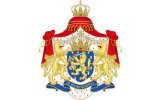The "Peat-colony's"
In the introduction on the homepage I already indicated that since about the year 1800 a number of relatives of the family Boekhoud for generations lived and worked in the "peat-colonies" and some relatives still live and work there. It is therefore obvious to give an impression about the region, how the peat-moor arised, the develpmend of the regio, i.c. the exploitation of the moor and the dire poverty in which the people had to live, in particular the workers in the moor.
and worked in the "peat-colonies" and some relatives still live and work there. It is therefore obvious to give an impression about the region, how the peat-moor arised, the develpmend of the regio, i.c. the exploitation of the moor and the dire poverty in which the people had to live, in particular the workers in the moor.
It is almost sure that in the last Ice Age the "Hondsrug" (a long row of dunes or embankments in the eastern part of the province Drenthe) is caused by the glaciers from Scandinavia. The higher situated land, eastern from Stadskanaal (in the south of the province Groningen) remained high enough to form a wide ravine or valley between this region and the "Hondsrug". Because the drainìng between the village Veendam in the north and the village Klazienaveen in the south was very poor and the condition of the soil was not fit enough to drain away the rainwater, it brought about an extensive swamp. In the course of centuries the dieing of moor-plants caused the arising in this regio (and with eastern offshouts In Germany) a peat-more with layers of peat till at least 10 meters of height and that for the Dutch part is known as the "Bourtangermoeras" (Bourtange is a very small fortified city in the eastern part of the province Groningen and moeras is "swamp"). Where the swamp was situated and the dimension of it is roughly indicated on the little map above.
fortified city in the eastern part of the province Groningen and moeras is "swamp"). Where the swamp was situated and the dimension of it is roughly indicated on the little map above.
The area of the swamp was around 160,000 hectare. How these swamps looked like you can see on the photo alongside.
In the years before 1800 there must doubtless have been peat-winning on a low scale by farmers who practised their business on the higher areas but there was no industrial exploitation at all.
In 1765 Groningen-city decided to dig a channel between the villages Bareveld and Ter Apel to promote the exploitation of the Bourtangermoeras (Bourtanger-more), the channel that since that time is known as the "Stadskanaal" (Litteraly "Town-channel"; read Groningen-city channel). The digging of the channel was, amongst other things, mainly inspired by the growth of the population and the industry in the north of the Netherlands which caused an increasing need for heating houses and the industry. In the beginning of the construction of the channel there was of course no extensive exploitation because the channel was only finished in 1856.
The "Stadskanaal" was for the development of the regio in that time the key factor. Altough workers from even very far came to this region, it are mostly the Groningen and German workers who digged the channel, with a  lenght of 31,4 kilometer and an average width of 15 meters on the watersurfase, mostly
lenght of 31,4 kilometer and an average width of 15 meters on the watersurfase, mostly
by hand. In the channel were build 8 sash locks (of which the photo alongside gives an impression) to overcome the height difference of 10 meters between the 9 parts of the channel between Veendam to Klazienaveen.
For the drainage and the transport of peat a number of side channels, the socalled "monden" were dug. These channels are still named after the place where they lead to. For instance: the "Valtermond" to Valte, the "Buinermond" to Buinen etc. From these side channels a great number of small channels were dug to access the more-lots, the socalled "wijken" They had no names but just a number. (In my youth I went with my cousins fishing in the 5th "wijk" of the "Valtermond"; this little channel was loaded with fish. J.B.)
During the years that the chanel and the side chanels were dug came with the progress thereoff the exploitation of the Bourtanger-more also in progress. Therefore the more was divided into lots which could be leased. People with some capital, the socalled "Veenbaronnen" (Peat-barons) leased these lots and signed up workers to clear the more. These labourers worked for next to nothing and, even the work in the more was very heavy and disagreeable, there was no lack of workers.
The demands of the "Veenbaronnen" to recruit these workers were extreme. For example: the labourers were forced to the system of truck, the system by which the workers were forced to buy there foods in the shop of the "Veenbaron" and moreover there wives also were forced to work in the more.
In the beginning of the exploitation of the more the housing of the workers mosttimes was abominable, not to say horrible. The family mostly lived in the middle of the more in the so-called "turf hut" ( a peat-hut) like demonstrated on the photograph. You can imagine that these circumstancis were a big problem to raise children. Education for them was hardly available and the older children had to take care of there younger brothers nd sisters. Also alcoholism to flee these harsh conditions was a big problem.
The family mostly lived in the middle of the more in the so-called "turf hut" ( a peat-hut) like demonstrated on the photograph. You can imagine that these circumstancis were a big problem to raise children. Education for them was hardly available and the older children had to take care of there younger brothers nd sisters. Also alcoholism to flee these harsh conditions was a big problem.
The progress of the exploitation of the more caused in those years the increase of the transport of all kind of goods, (in the beginning of course mainly the transport of peat), on the "Stadskanaal" till even up to 200 ships per day. At that time one of the busiest channels of he Netherlands. This intensive ship-traffic caused that sometimes the ships had to wait hours near the locks before they could pass. Because the skipper and his family of course needed there daily bread c.a., butchers, bakers, etc. settled in the neighborhood of these locks.
After the lots were dug out, on instructions of the city Groningen the soil of these lots had to be mingled with the useless upper layer of the more and rubbish and compost of the city to get thereby a suitable arable land so that the development of the region could increase once more.
During the exploitation of the area, more and more arable land became available on which farmers setteld who hired the workers they needed. The procucts that were grown were especially (industrial) potatoes and various cereals what led up to setteling of flower mills (from about 1841) and cardboard factories (from about 1870) who also hired a lot of labourers. Other industries that setteld were, among others, shipyards, brick-yards and a glass-factory.
Because for the housing of the workers in principal only cheap lots were available for building stand allone houses along the 'Stadskanaal' ( but sometimes with backyards up to 100 meters where people could grow there vegetables etc.) araised year by year between Ter Apel and Veendam the for the Peat-colonies characteristic "lintbebouwing" on both sides of the chanel. The housing of all these workers led up to the settling of shops who sold a varied selection of articles.
You must realize that up to about 1960 there was hardly any centre in the villages; every now and then a side-street and that was it.
All in all it may be clear that the "Stadskanaal" for the develpment of the 'Peat-colonies" has been of very great importance.
From about ca 1900 onward the industry around the peatery was decreasing bit by bit and came around 1950 almost to a standstill. The peat in the Bourtanger-more by now is diged off almost totaly. Only near Bargercompascuüm, and Klazienaveen a very small part still exist. Let us hope that this little part of the more will be protected and is saved for further exploitation.
When the transport by ship of agrarian products, such as peat, potatoes and straw, from 1920 - 1930 onward, decreased more and more because the transport was carried out by ax the 'Stadskanaal' lost gradually it's economical importance and the chanal nowadays (2012) is mainly used for pleasure-trips. The decreasing of the ecenomical interest is also indicated by the fact that several side chanals are filled up because there was no shipping anymore.
The decreasing of the ecenomical interest is also indicated by the fact that several side chanals are filled up because there was no shipping anymore.
It may be clear that the story above is only a very small exposé of the develpment of the "peat-colonies" If you want to know more you can find on Internet very much information about this region. From the time of my youth I know still many things of course but I also used Internet (with many thanks!)
I want to point out that my discription of the develpment of the 'Peat-colonies' ends at about 1950 - 1960. About the develpments after that period you must consult Internet.
Whenever you are int the north of Holland I can recommand you to visit the "Veenpark" in Bargercompascuüm near Klazienaveen. More information you can find on
www.veenpark.nl
On Youtube you can find a little film; the adress is:
www.youtube.com/watch?v=DpOpTsorPaE
 Wapen van Groningen
Wapen van Groningen Canadian coat of arms
Canadian coat of arms Wapen van Nederland
Wapen van Nederland South-African coat of arms
South-African coat of arms